A week after the storm, residents of Midland Beach, Staten Island, struggled to pick up the pieces — even as a FEMA disaster recovery area is set up at the end of Hunter Avenue and troops of volunteers with granny carts full of food go door-to-door.
Although many of the homes on the blocks right on or near the shore seem battered but livable from the outside, you only have to step across the threshold to see, smell and feel the devastation. Mud coats the floors and walls — even the inside of ovens and dishwashers. The stink of rotten food, mold and wet sheetrock choke the air.
Outside, homeowners, friends and volunteers still carry out ruined appliances, sheetrock, furniture, flooring, fixtures, cloths and possessions. Piles over 10 feet high line the streets.

Meisang and Wailin Wong visited the FEMA staging area on Monday to pick up some food and water. They rode out the storm in the 2nd story of their home on Bedford Avenue. "The water went up to the ceiling," Mr. Wong said.
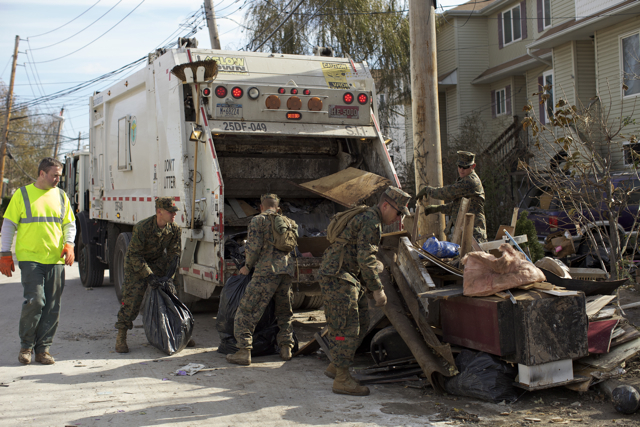
In the blocks across from the FEMA disaster recovery station, the devastation was everywhere. Teams of National Guard troops teamed up with sanitation works to clear the piled-up contents of homes.
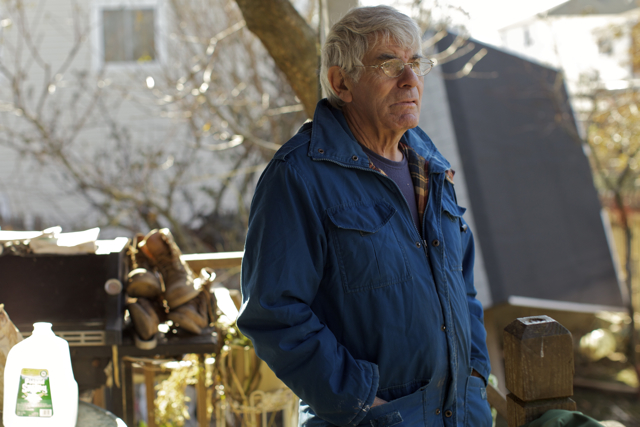
On Mapleton, Horatio Aranjo was attempting to work on his car but he could not find part of his jack. Aranjo was eating dinner the night Sandy hit when he saw an erratic light moving out in the street. It was a car being carried along by flood waters. "It was a Katrina situation. The water came in so fast. We had no time." Aranjo and his wife, Doria, fled to their attic with their three cats.
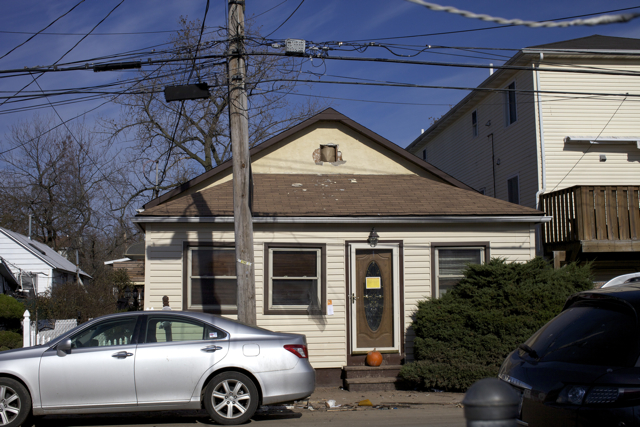
The morning after the storm, he says he directed a boat to his neighbors across the street who were calling from the tiny attic window.
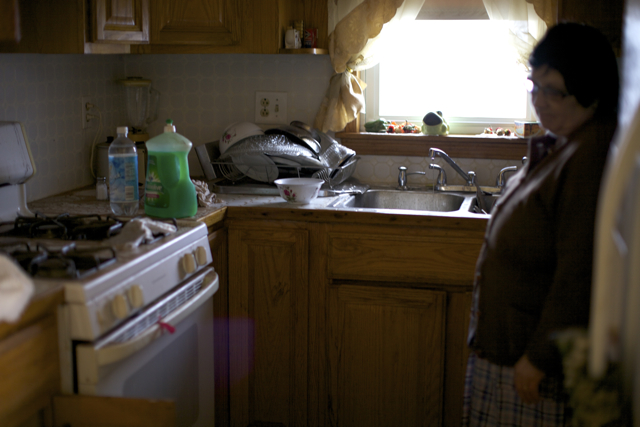
Inside 74 Mapleton, the smell of spoiled food, mold and wet sheetrock was overwhelming. Despite this, Doria Aranjo was in the kitchen attempting to salvage some brand new silverware, still in plastic. "Mira, mira!" she said in Spanish, pointing out the water and mud inside the oven, refrigerator and dishwasher.
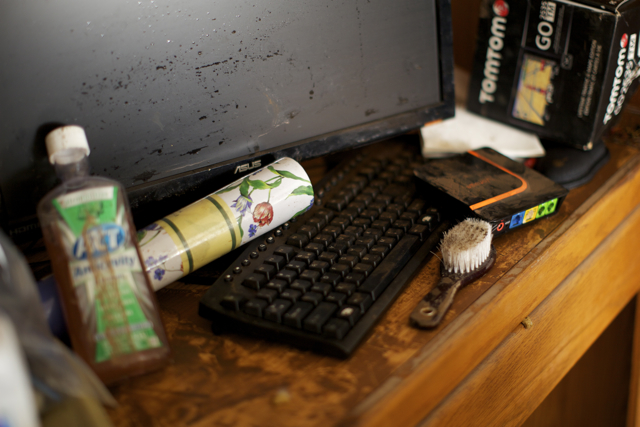
The computer and much of the home was submerged in 6 feet of water.
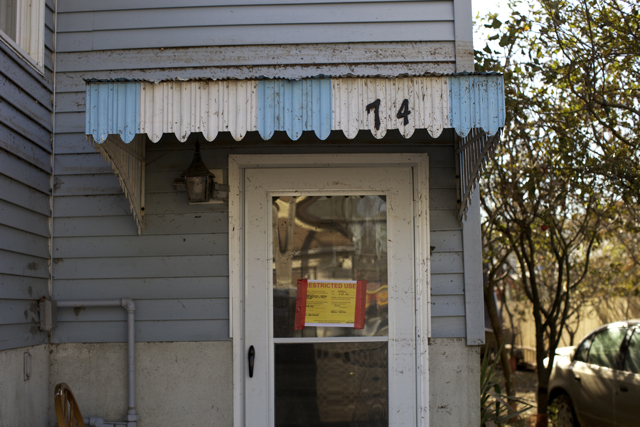
The waterline is clearly visible above the awning on the front door.
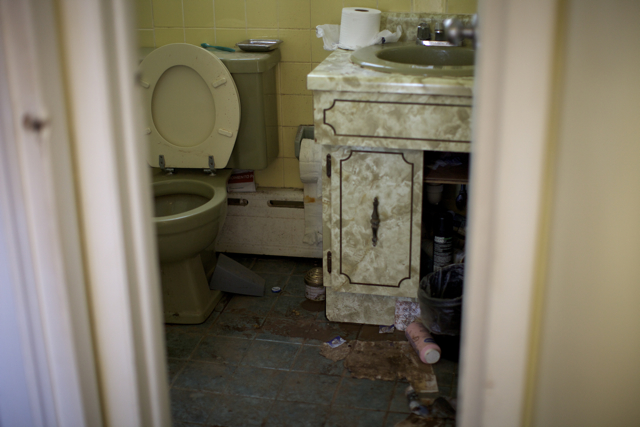
Leaves and mud can be found in the bathroom at 74 Mapleton.
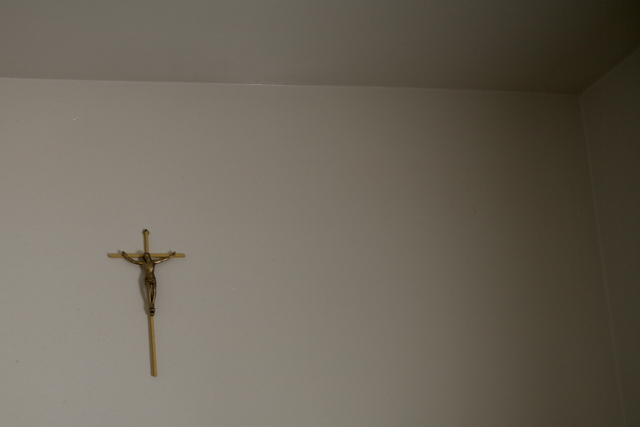
Doria Aranjo hastily took all the photos of her son off the wall as they rushed to the attic and piled them on a high shelf. They did not survive.
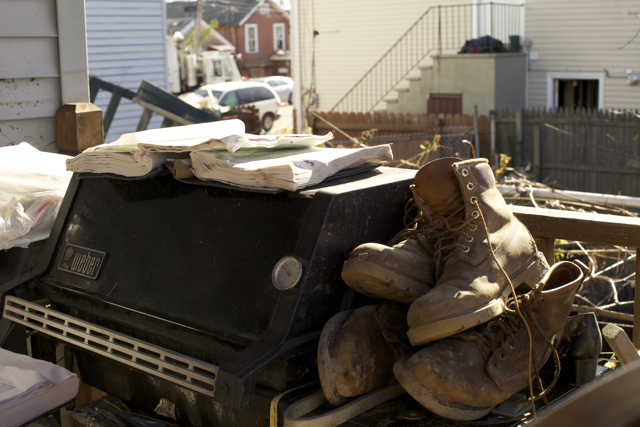
Work boots dry next to law books belonging to Aranjo's son who is in law school.

A volunteer drove by offering dry cloths. Almost all the couple's clothes were ruined, including some locked in dressers swollen shut by water. Two other groups of volunteers canvasing the neighborhood with food and tools were turned away.
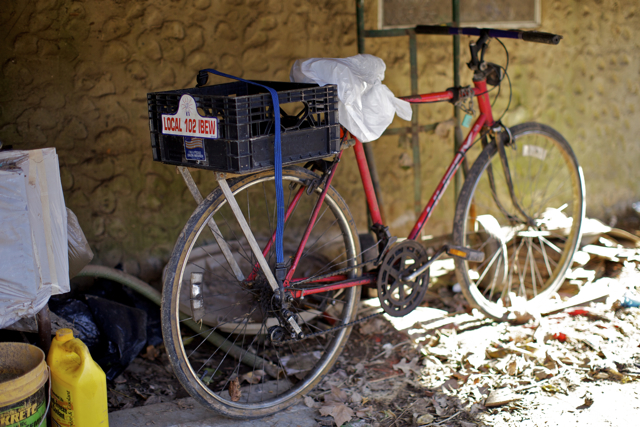
Horatio Aranjo's bike. "This is how I get around. Shopping. My sister-in-law from Spain called to tell me there was free gas. I had to hear it all the way from Spain!"
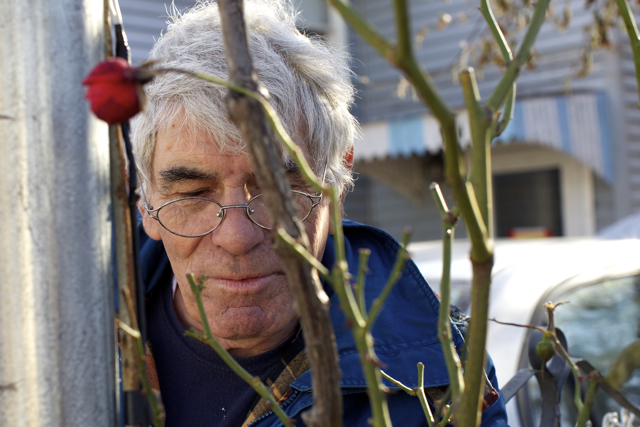
Horatio Aranjo shows off one of his rose bushes onto which he grafted many different colored roses. "These will all die from the salt water. Everything here will die."
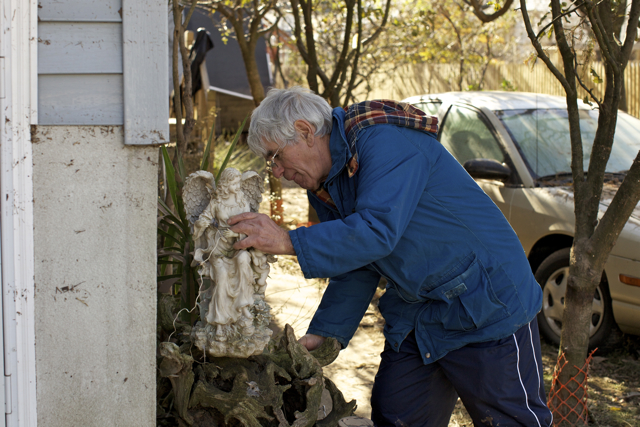
Horatio Aranjo fixes an angel in front of is house. "I want to get out of here. I'm tired." Aranjo was still waiting for a call back from his insurance agent on Monday afternoon.
